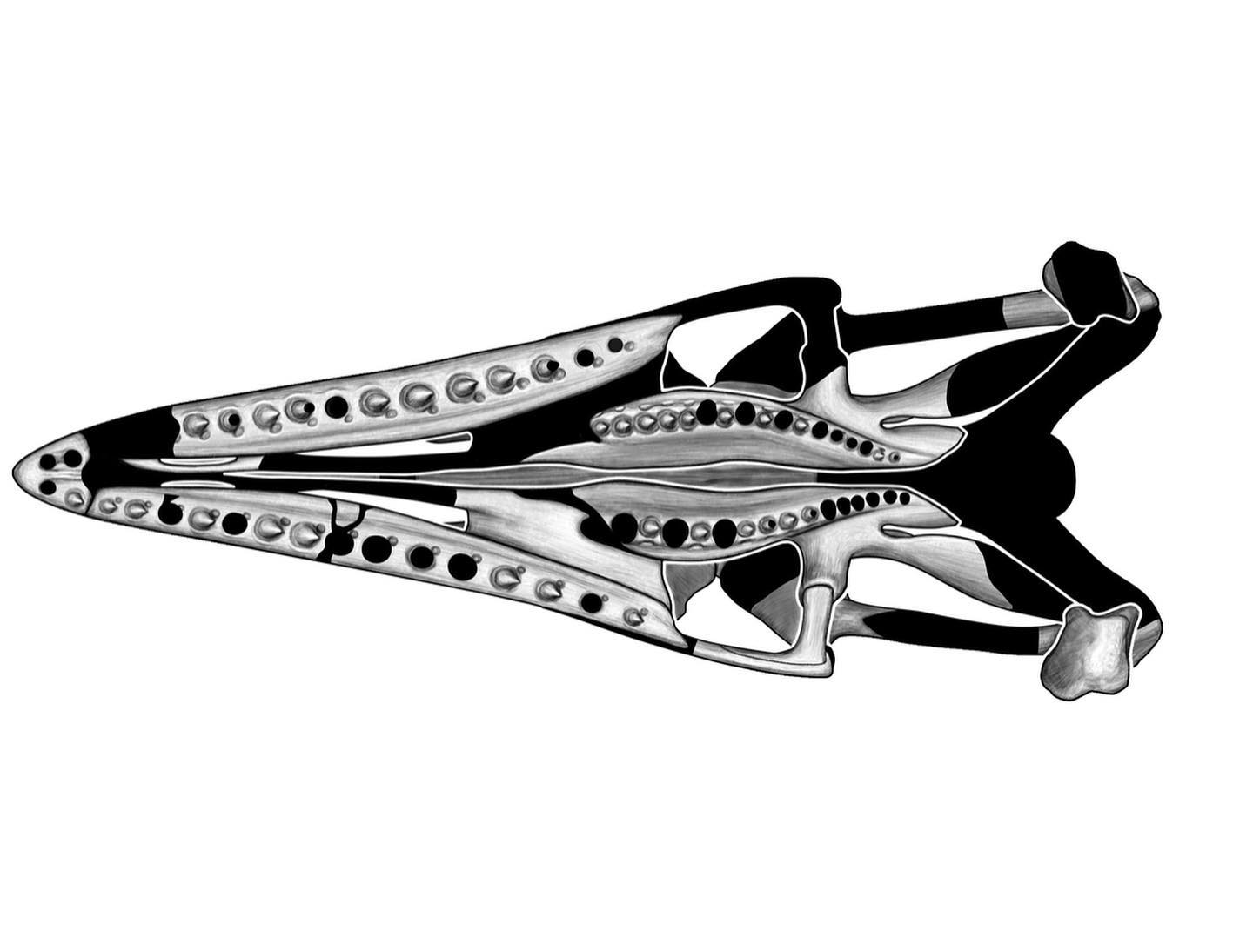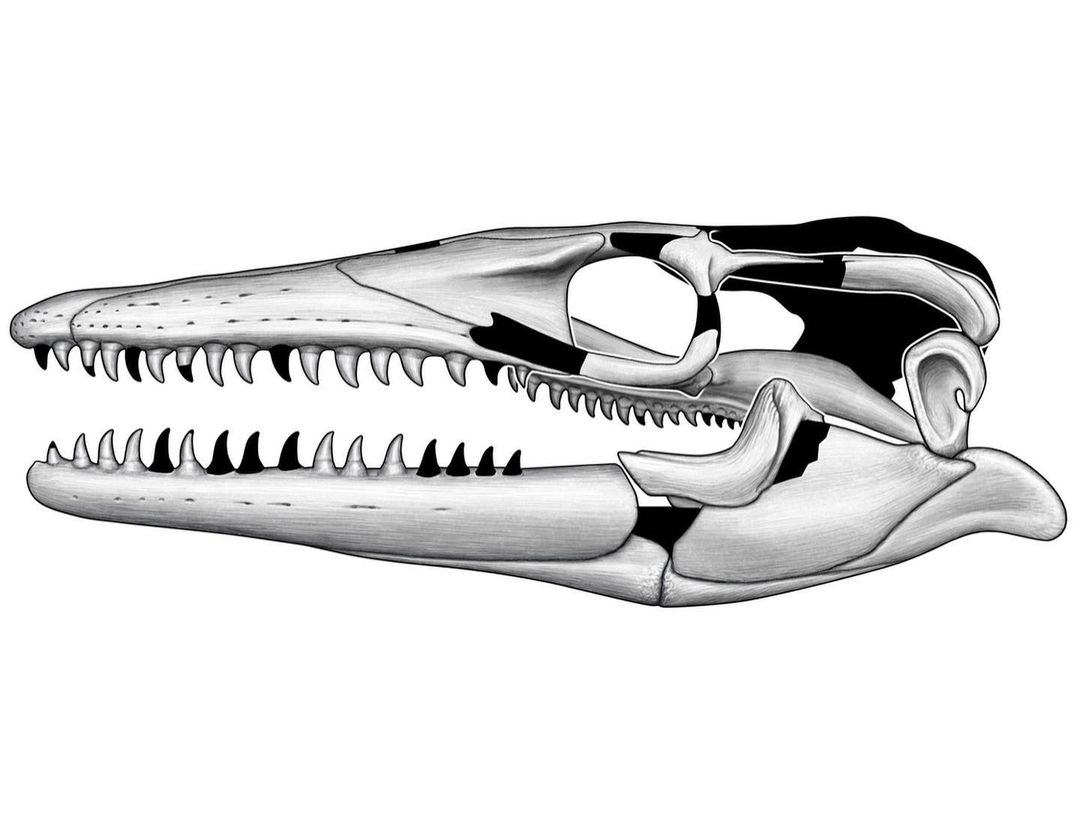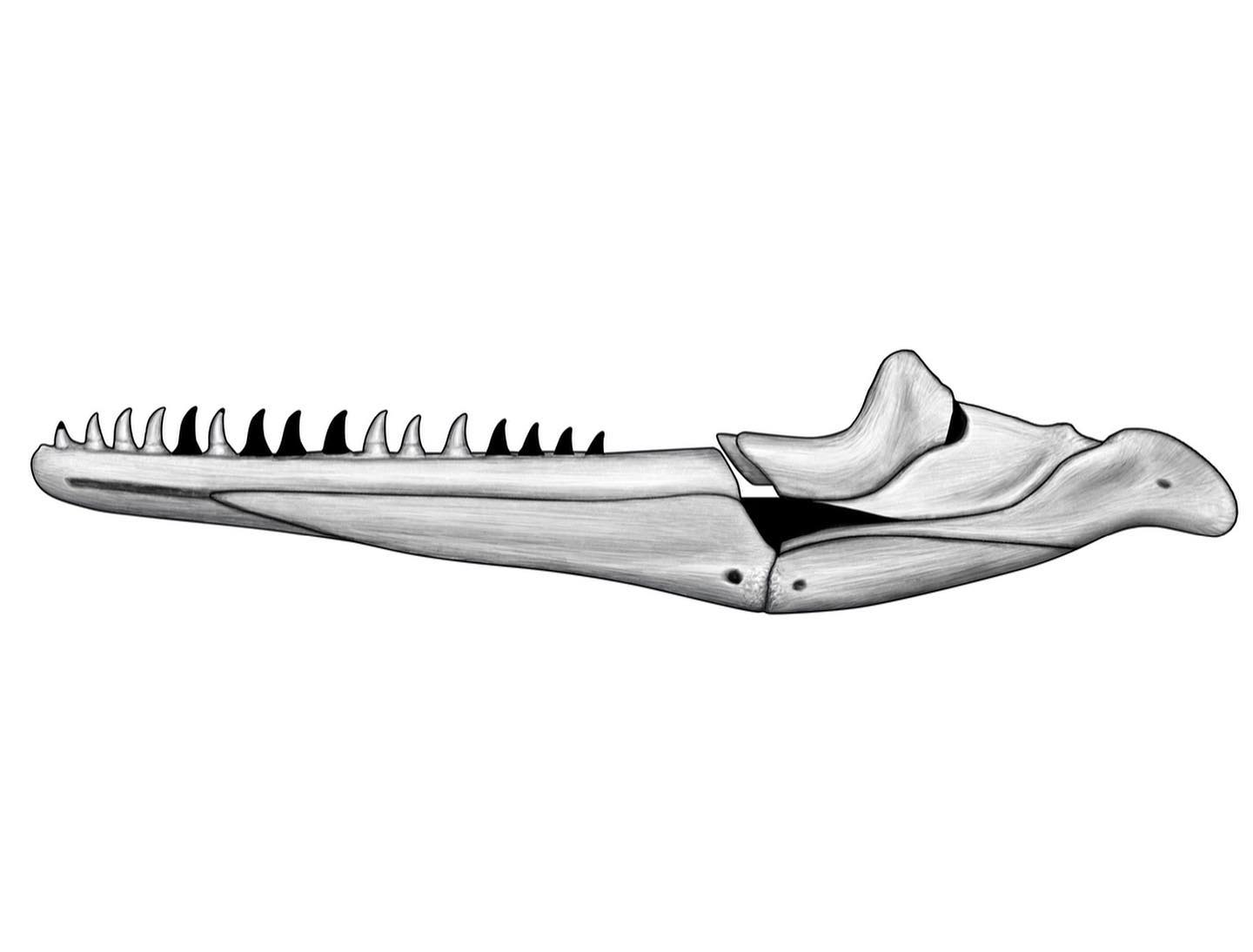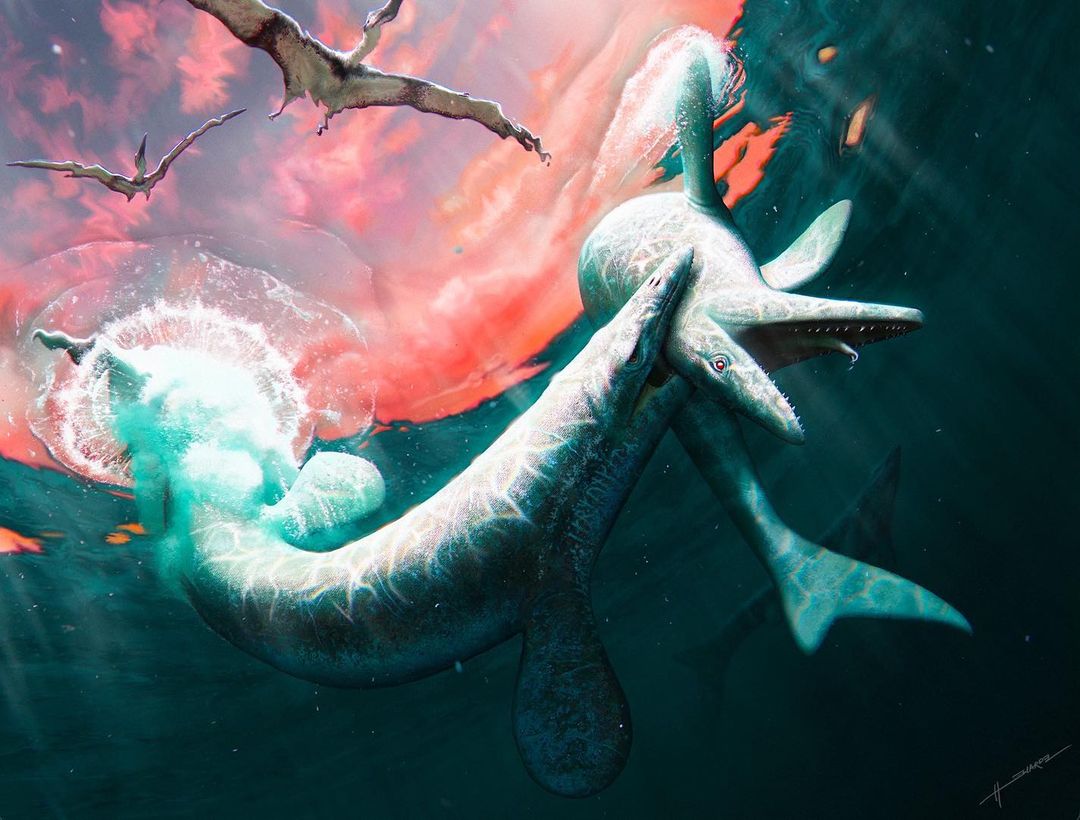A colossal 24-foot-long sea monster species has been unearthed by experts, marking a significant discovery in the field of palaeontology.
This newfound creature belongs to the mosasaur family, a now-extinct giant, carnivorous aquatic lizards. It has been officially named Jormungander Walhallaensi, drawing inspiration from Norse mythology’s sea serpent.
This aquatic behemoth is believed to have roamed the oceans during the late Cretaceous period, from 145.5 to 65.5 million years ago. Scientists describe it as possessing “transitional” characteristics, bridging the gap between two well-known mosasaur species.

The remarkable findings stem from a fossil unearthed in 2015 in Walhalla, North Dakota, USA. Over eight painstaking years, researchers meticulously studied and identified this distinct species. The skeleton was found in remarkable condition, with a nearly intact skull, jaws, spine, and abundant vertebrae.
After thorough analysis and surface scanning, a team of researchers has conclusively confirmed the existence of this new species. The aquatic creature represents an evolutionary link between the Clidastes species, a smaller mosasaur, and the Mosasaurus. These larger species could reach nearly 50 feet in length.
Approximately 24 feet in length, the Jormungander boasts distinctive features such as flippers, a shark-like tail, and pronounced ridges on the skull that give it an “angry eyebrows” appearance.

Mosasaurs are believed to have thrived between 100 and 66 million years ago before succumbing to extinction during the same catastrophic asteroid event that wiped out the dinosaurs. These creatures, having evolved flippers and adapted to an aquatic lifestyle, are more closely related to lizards and snakes than dinosaurs.
Amelia Zietlow, the lead author of the study and a PhD student in comparative biology at the American Museum of Natural History’s Richard Gilder Graduate School, aptly describes the Jormungander by saying, “If you put flippers on a Komodo dragon and made it big, that’s basically what it would have looked like.”
Research suggests that the Jormungander predates the Mosasaurus by approximately 80 million years, offering valuable insights into the evolutionary timeline of these remarkable creatures.

“This fossil is coming from a geologic time in the United States that we don’t understand,” noted co-author Clint Boyd from the North Dakota Geological Survey. “The more we can fill in the geographic and temporal timeline, the better we can understand these creatures.”
Disclaimers:
This content and images have been licensed to use by Jam Press, edited and syndicated by https://www.znewsservice.com/.
Should you have any questions relating to this content please get in touch with Jam Press via https://www.jampress.co.uk/contact-us/






